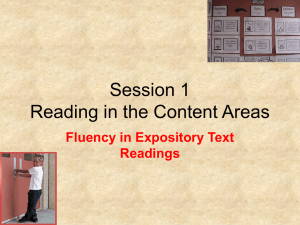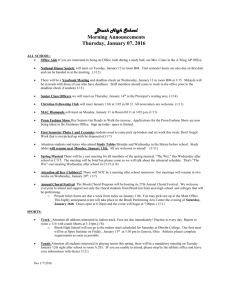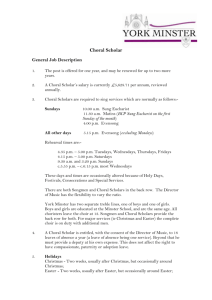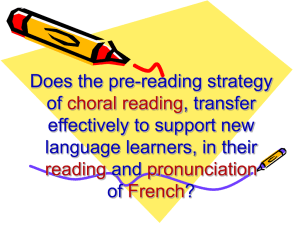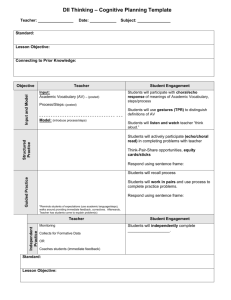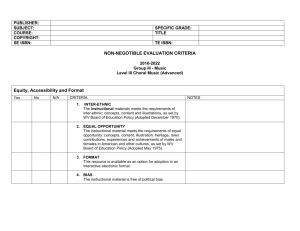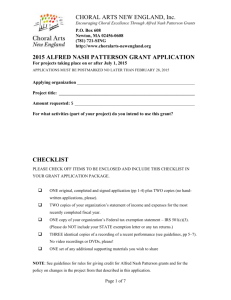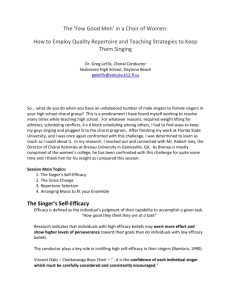Choral Reading
advertisement
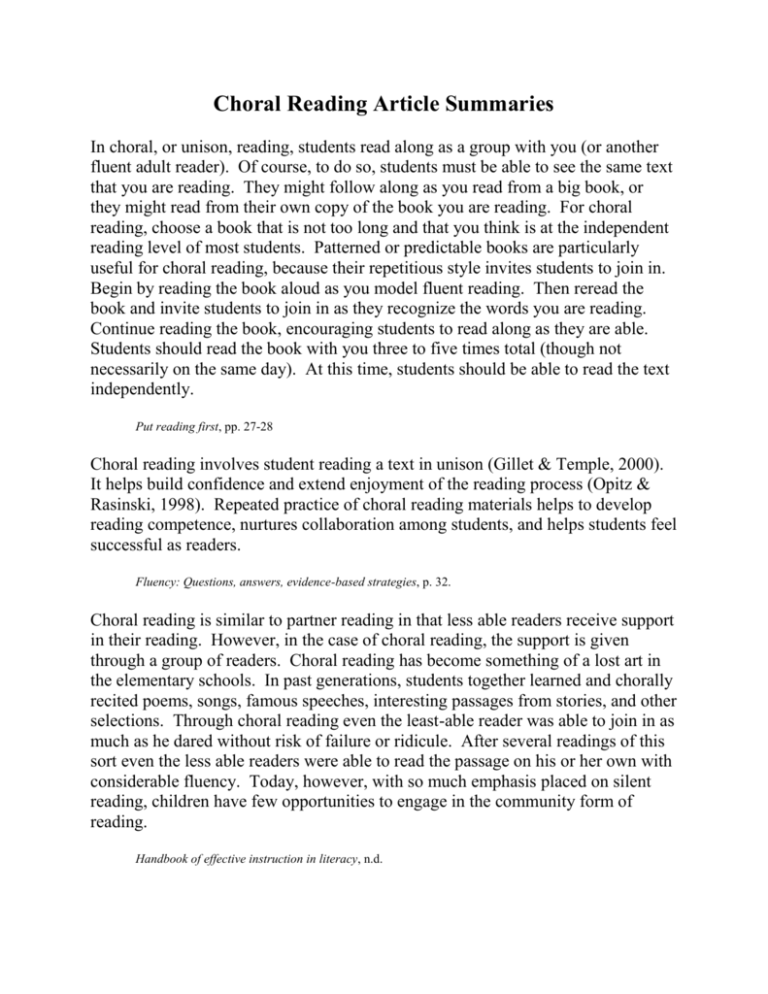
Choral Reading Article Summaries In choral, or unison, reading, students read along as a group with you (or another fluent adult reader). Of course, to do so, students must be able to see the same text that you are reading. They might follow along as you read from a big book, or they might read from their own copy of the book you are reading. For choral reading, choose a book that is not too long and that you think is at the independent reading level of most students. Patterned or predictable books are particularly useful for choral reading, because their repetitious style invites students to join in. Begin by reading the book aloud as you model fluent reading. Then reread the book and invite students to join in as they recognize the words you are reading. Continue reading the book, encouraging students to read along as they are able. Students should read the book with you three to five times total (though not necessarily on the same day). At this time, students should be able to read the text independently. Put reading first, pp. 27-28 Choral reading involves student reading a text in unison (Gillet & Temple, 2000). It helps build confidence and extend enjoyment of the reading process (Opitz & Rasinski, 1998). Repeated practice of choral reading materials helps to develop reading competence, nurtures collaboration among students, and helps students feel successful as readers. Fluency: Questions, answers, evidence-based strategies, p. 32. Choral reading is similar to partner reading in that less able readers receive support in their reading. However, in the case of choral reading, the support is given through a group of readers. Choral reading has become something of a lost art in the elementary schools. In past generations, students together learned and chorally recited poems, songs, famous speeches, interesting passages from stories, and other selections. Through choral reading even the least-able reader was able to join in as much as he dared without risk of failure or ridicule. After several readings of this sort even the less able readers were able to read the passage on his or her own with considerable fluency. Today, however, with so much emphasis placed on silent reading, children have few opportunities to engage in the community form of reading. Handbook of effective instruction in literacy, n.d. Description and Rationale for Choral Reading Description In choral, or unison reading, students read along as a group with a fluent reader. Rationale This is another technique for incorporating fluency training into the general education setting. Teachers may choose texts which are a part of their reading series and warrant additional practice, choose poetry selections, or select literature books which are of interest to the students. This technique provides a model of fluent reading for students as they listen to sound, stress, duration, and pitch. Also, this type of practice brings in the social context to the act of reading. This strategy is cost-effective and easy-to-implement yet yields gains in reading fluency. References Eldredge, J.L. (1990, November/December). Increasing the performance of poor readers in the third grade with a Group-assisted strategy. Journal of Educational Research, 84, 69-77. National Institute for Literacy. (2001). Put reading first: The research building blocks for teaching children to read. Jessup, MD: Author. Richards, M. (2000, April). Be a good detective: Solve the case of oral reading fluency. The Reading Teacher, 53(7), 534-540. Instructional Steps for Choral Reading 1. Students and teacher each have copies of the text. The teacher can use a big book so all students can see, students can have individual copies of the text, or students can be placed in dyads sharing the text between them. 2. The teacher begins by reading the text aloud as he/she models fluent reading. Students follow along in the text; some may have students point to the words as they are read. 3. The teacher rereads the text, inviting students to join in as they recognize the words. 4. Students and the teacher read the text several times (three to five) until students are able to read the text independently. Successive readings may occur over several sessions. Modified from: National Institute for Literacy. (2001). Put reading first: The research building blocks for teaching children to read. Jessup: MD: Author.

